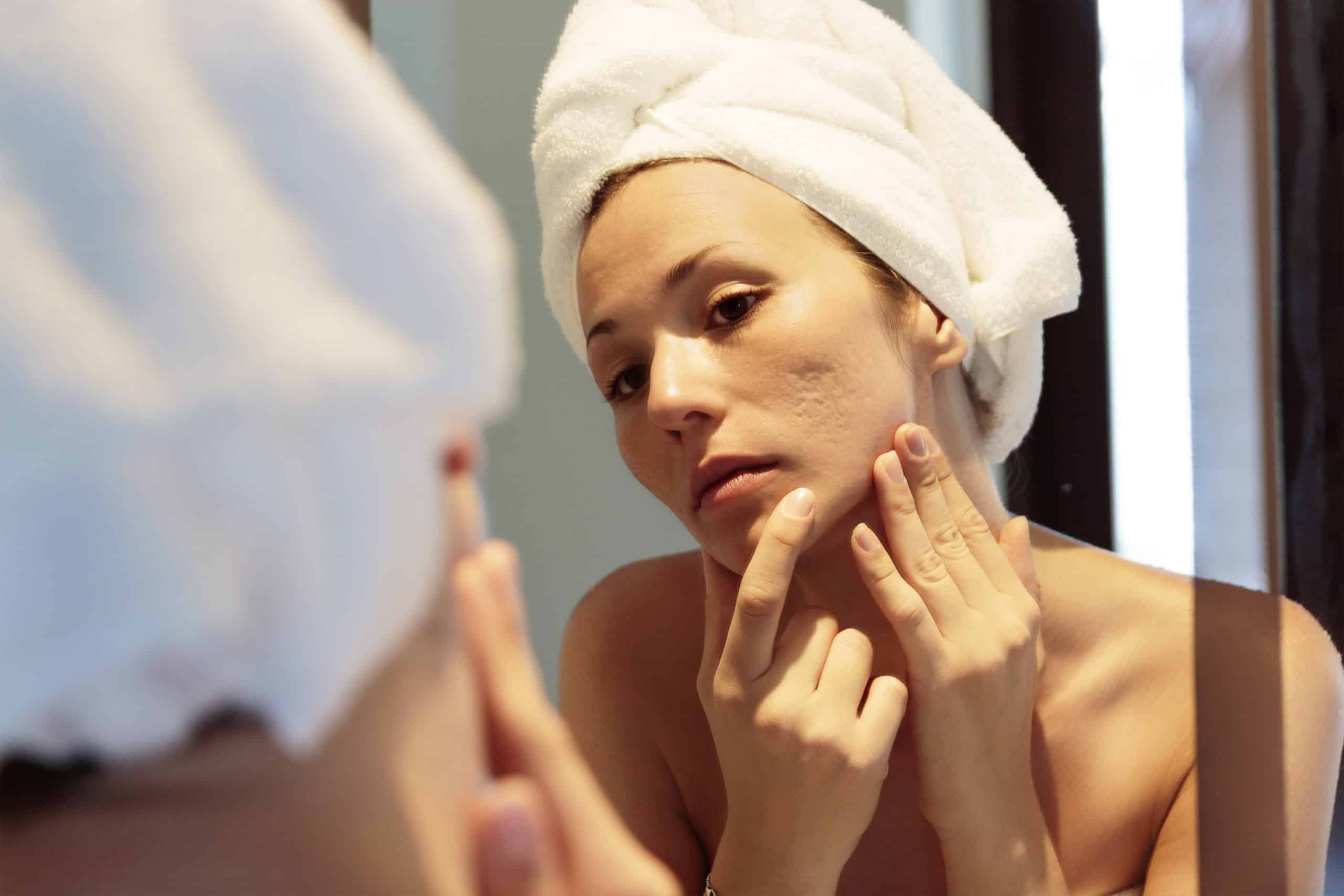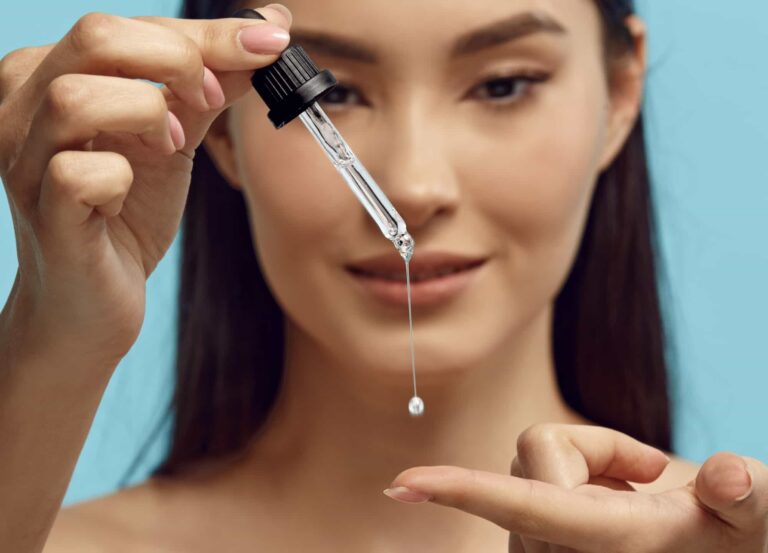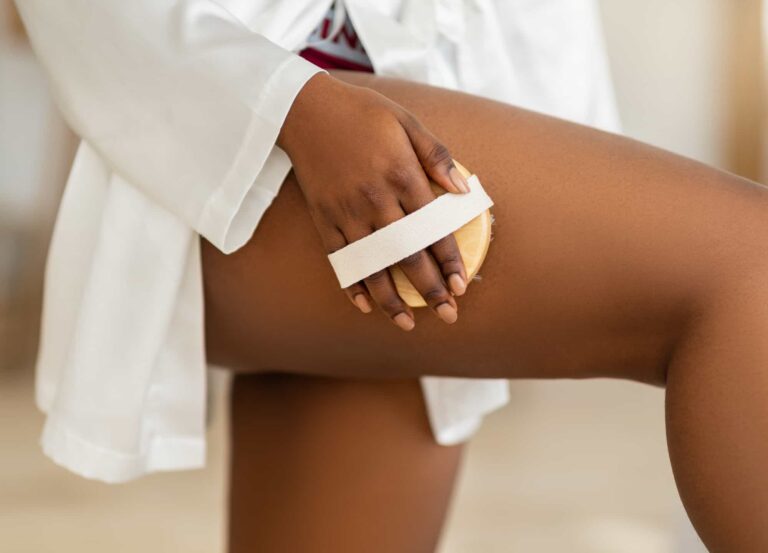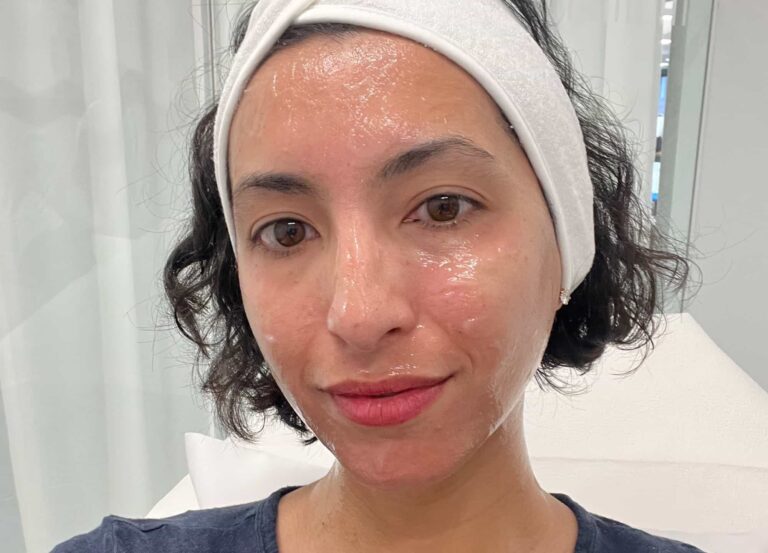As someone who has struggled with compulsive skin picking for nearly half my life, I think about scars—how to prevent them, how to erase them, how to accept them—far more often than I’d like. That scene in The Hunger Games after Katniss wins where she gets a full-body polish that removes every scar she’s acquired? Yeah, I’d volunteer as tribute just for the chance to win that prize.
Aesthetic medicine has come far, but alas, we aren’t quite there yet. “Scars are permanent and result from damage to the underlying collagen in the dermis. We can often make them better with various treatments, but removing them entirely is not practical even with the most sophisticated technology,” says Dr. Shari Marchbein, a board-certified dermatologist in New York City.
It’s also important to remember that “scar” really just refers to any mark left behind after an injury to the skin—be it a rapid growth spurt, sun damage, a burn, or surgery—and what works on one person’s scar may not work on yours. (That being said, sunscreen works for everyone—both as a preventive and reparative measure.) But before you add everything on Amazon to your cart and hope for the best, these are the best OTC scar treatments, according to RealSelf members and doctors.
For stretch marks, discoloration, and uneven skin tone
Bio-Oil Skincare Oil ($21.99)
“This is my holy grail product for discoloration and minor scarring (aka nothing raised) on my body. I’ve been using it for years, and its formula of healing plant oils, including calendula and chamomile, and retinyl palmitate has yet to let me down. My friend massaged the oil into her stomach and legs throughout her entire pregnancy and credits it as the reason she didn’t develop any stretch marks.” —Alix, 30
Related: 5 RealSelf Members Share Why Their Procedure Was Worth It
For post-op scar prevention
Vaseline Original Petroleum Jelly ($3.49)
“In my office, after surgical procedures and at home (after cuts, scrapes, burns, et cetera), I always use Vaseline jelly. This is especially important after surgical procedures and biopsies, to speed wound healing, improve scar appearance, and prevent scabbing. Studies have clearly shown that keeping a wound moist and not allowing it to dry out and scab leads to better and quicker healing and that antibiotic ointments are not necessary for clean or sterile procedures in most cases—in fact, antibiotic ointments can cause allergic contact dermatitis, which is much more rare with Vaseline jelly.” —Dr. Marchbein
Stratpharma Stratacel Film-Forming Wound Dressing for Sensitive Skin ($69)
“Stratacel is an OTC silicone gel that I like to recommend for the treatment of both old and new scars and to help prevent keloids. Skin likes a moist wound-healing environment, and Stratacel minimizes water loss while maintaining oxygen exchange. Stratacel dries down to a thin, flexible film, which keeps bacteria out but leaves the wound exudate [drainage] in place. This optimizes the healing environment, as the exudate has growth factors that promote healing. The gel can be applied directly onto open wounds without causing any irritation, and you can apply makeup over it. Clinical studies show that Stratacel is associated with less inflammation and [fewer] pigment alterations when compared to traditional dressings. I like to apply Stratacel after lasers and microneedling, as it helps to cool the skin and decrease redness and stinging.” —Dr. Jessie Cheung, board-certified dermatologist in Willowbrook, Illinois
For C-section scars
SkinMedica Scar Recovery Gel with Centelline ($44)
“A nurse said this was the best OTC scar removal gel to use on my C-section scar, after it had healed from the stitches and before I looked into lasers. It took about four to five months to notice a difference, but the redness eventually came down completely and the olive oil in the formula made the scar much more supple. I might still do a laser session, but I’m honestly fine with the appearance just from using this.” —Ally, 31
For acne scars
Skinceuticals Advanced Pigment Corrector ($92)
“I’m still dealing with the remains of hyperpigmentation and marks on my face from when I had really severe acne in high school and college. This treatment, along with retinol—I use the Skinceuticals one too—has made a huge difference in my tone and texture. It has hydroxyphenoxy propionic acid, which is a gentler form of hydroquinone. I don’t use it all over, just in the problem areas—so it lasts me quite a while.” —Megan, 29
Related: Science or Suspect: Does Infrared Light Really Improve Skin?
For hypertrophic, keloid, and old scars
Silagen 100% Pure Silicone Gel, sold at physicians’ offices
“My favorite scar treatment is Silagen topical silicone gel. It’s applied twice daily for the first three months after surgery.” —Dr. William Bruno, board-certified plastic surgeon in West Hollywood, California
“The Silagen Scar Gel SPf 30 is very convenient for summertime or if you’re going outdoors. If the latter, nothing is better than [putting] a physical Band-Aid [over the scar].” —Dr. Estee Williams, board-certified dermatologist in New York City
Scarguard MD ($59.99); Kelo-cote Advanced Formula Scar Gel ($26.17)
“There are a number of over-the-counter scar removal gels available. The best contain silicone gel, such as Scarguard or Kelo-cote. These should be applied twice a day and allowed to dry. If the skin is exposed, it should be covered with sunscreen as well. For areas under a lot of tension or subject to potential keloid, silicone sheeting is even better and can now be found over the counter.” —Dr. Steven J. Pearlman, board-certified facial plastic surgeon in New York City











